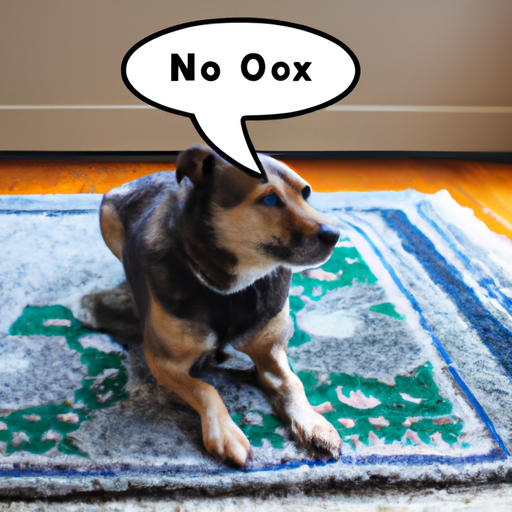Understanding Why Dogs Bark
As a caregiver, it’s essential to understand that barking is a natural behavior for dogs. They bark to express a variety of emotions, such as:
- Fear
- Boredom
- Excitement
- Attention-seeking
- Warning or alerting to perceived threats
Understanding the root cause of your dog’s barking is the first step towards addressing it.
Training Your Dog to Be Quiet
Training your dog to quiet down involves patience, consistency, and positive reinforcement. Here’s a step-by-step guide:
- Start by choosing a command word or phrase, such as “Quiet” or “Enough.”
- When your dog starts barking, say the command in a firm but calm voice.
- If your dog stops barking, reward them with a treat or praise.
- Repeat this process consistently until your dog begins to understand the command.
Remember, it’s crucial not to yell at your dog, as this can increase their excitement or anxiety and escalate the barking.
Providing Mental and Physical Stimulation
Frequently, dogs bark out of boredom or pent-up energy. Incorporate these strategies to keep your dog engaged:
- Regular walks or play sessions
- Training exercises
- Interactive toys or puzzles
- Socializing with other dogs
Providing adequate mental and physical stimulation can help reduce excessive barking.
Using Positive Reinforcement
Positive reinforcement involves rewarding your dog when they exhibit desirable behavior. Here are some ways to incorporate this into your training:
- Reward your dog when they stop barking on command.
- Praise them when they remain quiet in situations where they typically bark.
- Give them a treat or their favorite toy as a reward.
Managing the Environment
Sometimes, the environment can trigger your dog’s barking. Here are some strategies to manage this:
- Reduce exposure to triggers, such as blocking your dog’s view of the street if they bark at pedestrians.
- Create a safe space where your dog can retreat if they feel anxious or scared.
- Use white noise machines or calming music to drown out potential noise triggers.
Seeking Professional Help
If you’re struggling to manage your dog’s barking, consider seeking help from a professional dog trainer or behaviorist. They can provide personalized strategies and guidance to help manage your dog’s behavior.
Using Bark Control Devices
Bark control devices, such as ultrasonic devices, citronella collars, or vibration collars, can help deter your dog from barking. However, these should be used as a last resort and under the guidance of a professional.
| Device | How it Works | Pros & Cons |
|---|---|---|
| Ultrasonic | Emits a high-frequency sound that deters barking | Pros: Non-invasive, Cons: Can be triggered accidentally |
| Citronella | Sprays a citronella mist when barking is detected | Pros: Non-electric, Cons: Some dogs may not respond, others may become desensitized |
| Vibration | Sends a vibration to your dog’s collar when they bark | Pros: Non-electric, adjustable settings, Cons: Dogs may not respond or may become desensitized |
Frequently Asked Questions
Why is my dog barking at night all of a sudden?
This could be due to a variety of reasons, such as anxiety, discomfort, or changes in their environment. Consult with a vet or professional behaviorist to identify the underlying cause.
How can I stop my dog from barking when I’m not home?
Consider using a pet camera to monitor your dog’s behavior while you’re away. You can also create a comfortable environment with toys, calming music, and comfortable bedding to help them feel more at ease.
Is it okay to use a bark collar on my dog?
Bark collars should only be used as a last resort and under the guidance of a professional. They can sometimes cause fear or anxiety in dogs.
Why does my dog keep barking at strangers?
This could be due to fear, territorial behavior, or lack of socialization. Training and socialization can help address this issue.
My dog barks at everything. What can I do?
This might be due to hyperactivity, fear, or anxiety. Consider consulting with a professional for personalized strategies and guidance.
Remember: Every dog is unique, and what works for one might not work for another. Patience, consistency, and love are key to helping your dog become a quiet and well-behaved companion.



